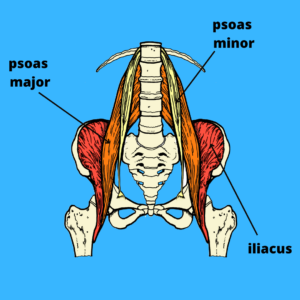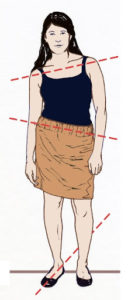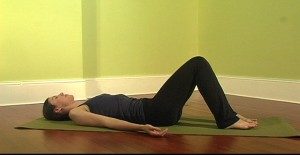The Missing Link Between Hypermobility, Pain, and Unresolved Trauma
The psoas muscle is one of the most misunderstood and overlooked muscles in the human body. Running deep in the trunk, connecting along the lumbar spine and the femur (leg bone), this muscle is essential for movement, stability, and even emotional well-being.
If you struggle with hypermobility, chronic pain, or unresolved trauma, your psoas might be playing a bigger role than you realize.
The Psoas and Hypermobility

Hypermobility is often thought of as excessive joint flexibility, but that flexibility is due to laxity in connective tissues meant to provide stability. The psoas, a key stabilizing muscle, can become overworked in people with hypermobility as the body struggles to find balance. Instead of relaxing and engaging naturally, the psoas may stay in a constant state of contraction, trying to create stability where the joints do not.
This excessive tension in the psoas can lead to:
- Chronic tightness despite apparent flexibility
- Increased risk of muscle spasms and cramping
- Postural imbalances that contribute to pain
Psoas-Related Pain: The Hidden Cause of Discomfort

Many people with persistent back, hip, and pelvic pain don’t realize that their psoas may be the root cause. A tight or imbalanced psoas can:
- Pull on the lower back, leading to discomfort and misalignment.
- Create pelvic misalignment and hip instability, causing pain in the groin or sacroiliac joint.
- Affect gait and movement patterns, leading to compensatory issues in other muscles.
For those with hypermobility, this pain can be especially complex. Because the psoas is constantly engaged, it can fatigue quickly, making movement feel both unstable and restricted at the same time.
And, for whatever reason, hypermobility often flies under the radar of doctors and other healthcare practitioners. It is a somewhat invisible issue that isn’t usually on the checklist of possible causes for chronic pain.
Trauma and the Psoas: The Body’s Emotional Storage Unit
The psoas is not just a physical muscle—it is deeply intertwined with the autonomic nervous system. As a key player in the fight-or-flight response, the psoas contracts under stress, preparing the body for action. When trauma occurs, the body may not fully release this tension, leaving the psoas in a prolonged state of contraction due to the unresolved trauma.
For individuals with a history of trauma, this can mean:
- Chronic tightness that feels resistant to stretching.
- A heightened sense of anxiety or unease in the body.
- Difficulty fully relaxing or letting go.
Since those with hypermobility often have more sensitive nervous systems, they may be even more prone to psoas-related tension and unresolved trauma storage.
Releasing and Restoring Balance in the Psoas

Rather than simply stretching the psoas, true relief comes from gentle release work, nervous system regulation, and strengthening the surrounding muscles. Some effective ways to restore balance include:
- Postural Change: Most people’s default posture allows the thighs to lean forward pulling the psoas out of alignment forcing it to work harder. Get your legs under your hips to free the psoas.
- Walk Well: The Psoas is the main muscle of walking with every successful step initiated by the psoas muscle. Walking poorly puts undue stress on the psoas and makes getting out of pain more difficult. The way you walk might not be why you are in pain but it can keep you from healing.
- Release Exercises: Passive exercises, and slow, mindful movements help the psoas release tension and trauma, helping to regulate a dysfunctional nervous system.
- Stability training: Strengthening the core, glutes, and inner thighs, can take pressure off the psoas and create more structural support.
If you’ve been struggling with chronic pain, hypermobility-related discomfort, or the lingering effects of trauma, addressing the health of your psoas could be a game-changer. By nurturing this deep and powerful muscle, you can move toward greater ease, stability, and a sense of calm in your body.

